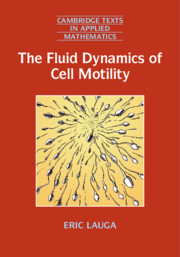4 - The Squirmer Model
from Part One - Fundamentals
Published online by Cambridge University Press: 09 September 2020
Summary
This fourth chapter introduces the second canonical model of low Reynolds number swimming, namely that of the squirming sphere. Originally proposed by Lighthill (1952), and later extended by Blake (1971), this model is a variation of the waving sheet adapted to a finite-size swimmer. Here, the surface of a spherical body undergoes periodic small-amplitude deformations, leading to instantaneous velocity boundary conditions applied on an effective spherical frame. Since Lighthill's original paper, the squirmer model has been used and extended in a variety of setups, in particular to provide an alternative envelope model of the metachronal waves of cilia for finite-size organisms. We first derive the classical swimming squirmer model for a translating swimmer before discussing its extension to rotational motion. We then show how to link the motion of points on the surface of a deformable sphere described in a Lagrangian fashion to the squirmer model written naturally in an Eulerian framework. We finish by comparing the results of the model with flow measurements around the flagellated green alga Volvox.
Keywords
- Type
- Chapter
- Information
- The Fluid Dynamics of Cell Motility , pp. 45 - 62Publisher: Cambridge University PressPrint publication year: 2020



